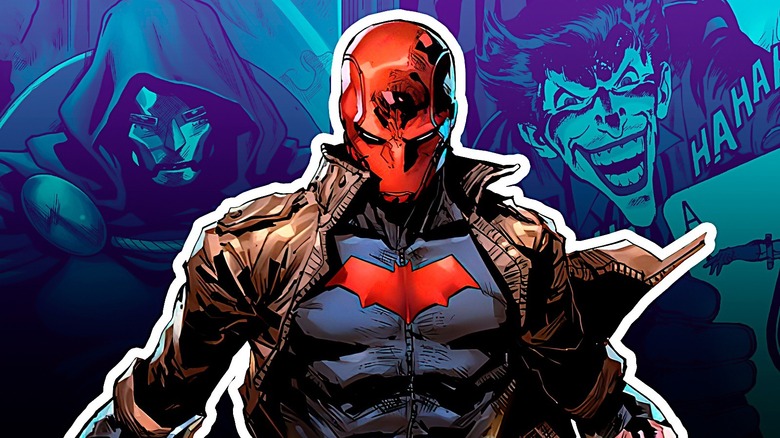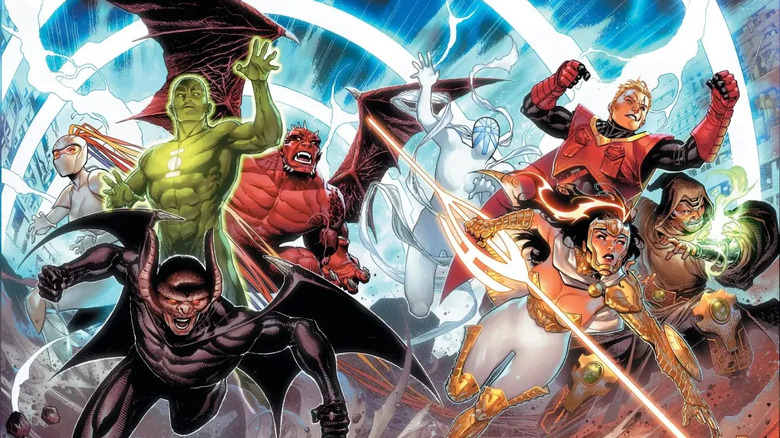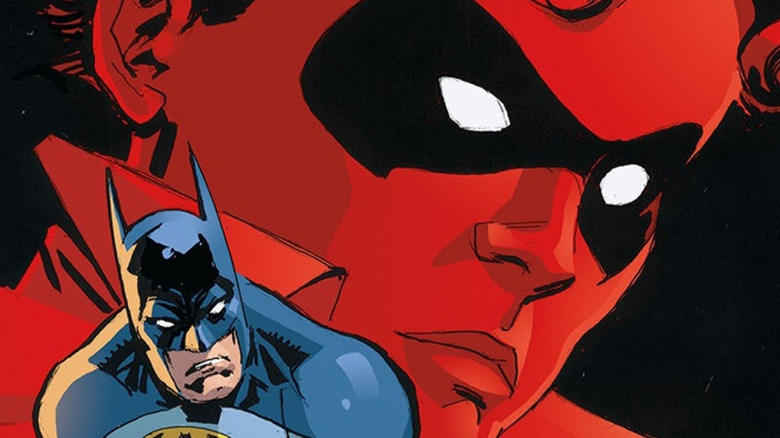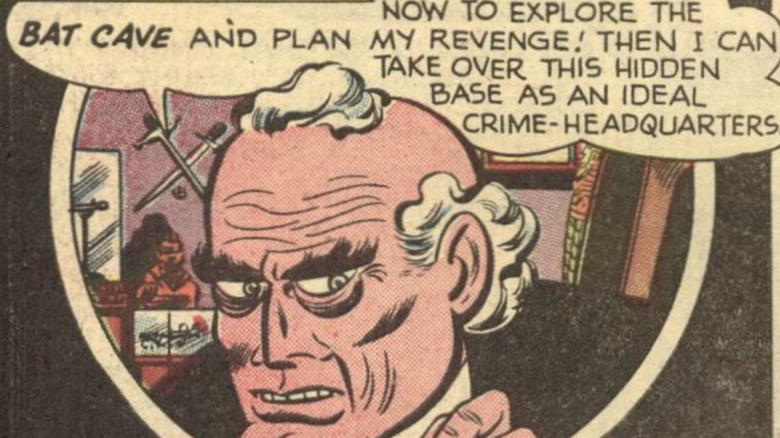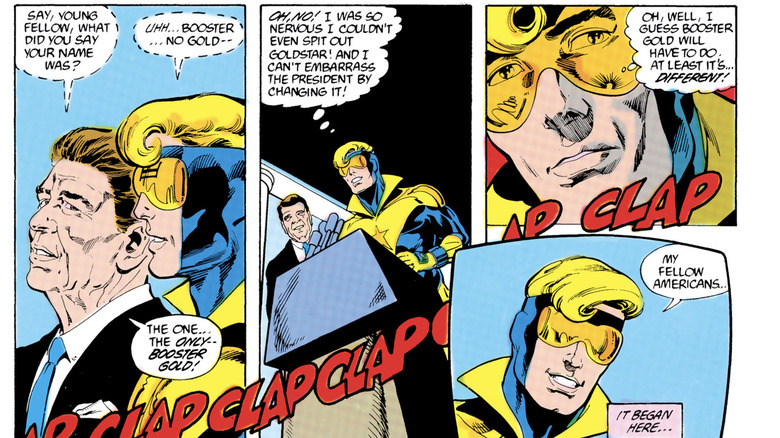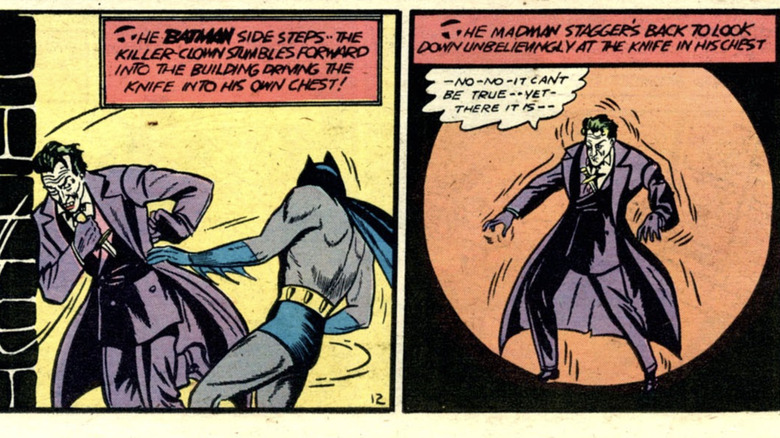5 DC Superhero Facts That Sound Fake But Are Totally True
The DC Comics universe has been around for more than 80 years, so it's no surprise that it's seen many changes take place between the Golden Age and the present day. However, some of the oddest ideas, characters, and scrapped plans are so hard to believe that even decades after they happened (or were intended to occur), they remain noteworthy for their strangeness.
Some of the more bizarre facts that have become common knowledge to both comic book readers and fans of the DC Universe include Batman having three Jokers, pink Kryptonite changing Superman's sexuality, and DC letting fans vote on whether Jason Todd's Robin should live or die.
But there are some even harder-to-believe facts about DC Comics. From Stan Lee creating his own Justice League with his takes on Batman, Superman, and Wonder Woman, to Booster Gold accidentally getting his heroic moniker from a real-life U.S. President, and the Joker nearly being killed off after one of his earliest appearances over eight decades ago. These five facts stand out as some of the most unbelievable when, in reality, they are absolutely true.
Stan Lee has his own Justice League
When Stan Lee briefly left Marvel Comics in the 2000s, the legendary writer was invited to put his spin on DC's biggest heroes. As a result, Lee's "Just Imagine..." universe reinvented the likes of Batman, Superman, Wonder Woman, and the entire Justice League.
Working with some of the era's most notable comic book artists, including Jim Lee, Kevin Maguire, John Byrne, Walt Simonson, and Dave Gibbons, DC released a series of one-shots starring Lee's versions of famous DC heroes. Among them was Wayne Williams, the first African-American Batman created alongside Joe Kubert, who transforms from a wrestler into a vigilante while wearing a bat-like ensemble. Lee teamed up with his longtime "Amazing Spider-Man" collaborator John Buscema to introduce Salden, aka Superman, a former police officer on Krypton, whose homeworld is still very much alive.
With Maguire, Lee debuted Mary Maxwell, The Flash of the "Just Imagine..." universe, with her powers derived from a hummingbird's DNA. Lee's collaboration with Gibbons introduced the Green Lantern, aka Len Lewis, who is gifted powers from the Tree of Life, Yggdrasil, and becomes the Earth's protector. Maria Mendoza, created with Jim Lee, is Wonder Woman, who gains her powers after encountering the staff of an Incan sun god, Manco Cápac.
All of the one-shots lead into the universe's own Crisis-level event. The recreations were chock-full of Lee's writing, from his alliterative naming to his approach to crafting secret origins. In celebration of the late Lee's 100th birthday in 2022, DC Comics released a new anthology set in the world of "Just Imagine...," revisiting some of his DC creations. Still, more than two decades after Lee created the heroes, it's hard to believe they exist, given his decades-long association with Marvel.
Jason Todd's fate was almost much different
In the late 1980s, Jason Todd's Robin famously met his end at the hands of the Joker in "Batman: A Death in the Family" (by Jim Starlin, Jim Aparo, Mike DeCarlo, John Constanza, and Adrienne Roy) after readers voted on his fate. However, according to Starlin, Robin almost died in a much different way.
In a conversation with SyFy, Starlin revealed that DC Comics was planning on killing off a character after giving them AIDS so they could create an educational booklet on the virus. The publisher asked creatives which heroes they would like to see die, and Starlin chose Robin, as he wasn't a fan of Todd's Boy Wonder. The writer explains: "Strangely enough, they decided to put up a ballot box and let the people who worked in the company decide who was gonna get AIDS in the DC Universe. I tried to stuff the box with Robin's name, and at the end it was Jimmy Olsen who was elected to get AIDS. The entire project was eventually abandoned. I thought that was the end of it until Denny O'Neil came up with the idea of calling in to vote on whether Robin lived or died."
While the storyline might have been relevant during the AIDS epidemic, it's probably best DC avoided infecting Robin or Jimmy. "A Death in the Family" ended up being one of the most memorable and controversial storylines of its era. Its impact remains noteworthy to this day, leading to the character's eventual resurrection and transformation into the fan-favorite vigilante, Red Hood. In 2023, DC Comics released the unpublished version of the story, revealing what would have happened if Todd hadn't been killed. A miniseries, "Death in the Family: Robin Lives," followed not long after, likewise following an alternate history in which Todd survived.
A villain named Doctor Doom appeared before Marvel's veresion
Doctor Doom, the Fantastic Four's primary foe, is one of the most feared villains in all of comics, as well as one of Marvel's most recognizable characters. However, more than a decade before the ruler of Latveria appeared in "Fantastic Four" #5, DC Comics introduced ... Dr. Doom!
In 1950's "Detective Comics" #158 (by Edmond Hamilton, Bob Kane, Charles Pairs, and Jack Schiff), Batman and Robin encounter a criminal called Dr. Doom. After stealing jewels and escaping the Dark Knight by plunging himself into the Gotham City ocean, Dr. Doom hides in a sarcophagus gifted to Batman to put in the Batcave. Upon infiltrating the secret lair, Doom rigs the hero's trophy room with traps, including a crashing giant penny that nearly lands on Batman, a harpoon gun that just misses skewering the hero, and a mechanical dinosaur that causes all kinds of chaos. Unfortunately for Dr. Doom, he meets his end after hurling a grenade at the dynamic duo and, in hiding from the explosion, gets trapped in the sarcophagus, where he dies from suffocation.
Weirdly enough, this Dr. Doom isn't even the first DC villain to sport the name. In 1942's "Leading Comics" #3 (by Hal Sherman, Mort Meskin, George Papp, Creig Flessel, and John Lehti), members of the Seven Soldiers of Victory deal with an evil time-traveling scientist named Wilfred Doome, who is referred to as Doctor Doome. However, unlike Dr. Doom, who just appeared in a single Batman story before his death, Doome popped up in a few additional Justice Society of America-related storylines.
Booster Gold's name came from Ronald Reagan
Booster Gold's official superhero name came from an unlikely source, as it was United States President Ronald Reagan who canonically coined the time-traveling superhero's moniker.
In "Booster Gold" #8-9 (by Dan Jurgens, Mike DeCarlo, Gene D'Angelo, John Costanza, and Agustin Mas), the story flashes back to Booster's arrival in 1985. Booster, who is fleeing from the 30th century's Legion of Super-Heroes after stealing some of their tech, begins his time as the modern era's newest hero by making his costume and working to prevent the assassination of Reagan by the criminal organization the One-Thousand. Unfortunately, the Legionnaires think Booster is trying to kill the president, leading to a mix-up between the heroes.
After figuring out who is on whose side, Booster teams with the Legion to successfully save Reagan. In a speech commending his efforts, the U.S. president asks him what his name is. Booster tells him, "Booster, no Gold..." stumbling over his "Booster" nickname and chosen hero name, Goldstar. Reagan runs with the nervous answer and introduces him to the world as Booster Gold. Worried he would embarrass the president by correcting him, Booster decides to keep the name, and thus, a legend (if only in his own mind) is born.
The Joker was supposed to die soon after his debut
DC Comics planned to permanently kill the Joker soon after his first appearance.
In "Batman" #1 (by Bill Finger, Bob Kane, and Jerry Robinson), Batman and Robin learn of the Joker's escape from prison following their first encounter. When the dynamic duo locates the Clown Prince of Crime, the villain tries to stab and kill the Dark Knight but accidentally impales himself with his knife during the fight. As a result, Batman and Robin believe the Joker is dead as they stare at his lifeless body. However, the issue ends with an ambulance picking up Joker and revealing that he's somehow still alive — which wasn't the original plan.
According to legendary comic book writer Steve Englehart (via NPR), DC's editors realized how great a character the villain was and decided to change the ending to feature an additional panel with the ambulance scene. "Only after he was on the way to fictional hell (or wherever evil comic-book characters go when they die), an editor at DC Comics said, Wait a minute — 'this guy is pretty good!' And they decided to revive him."
The decision to keep the Joker around proved to be among the best decisions DC Comics ever made, as he quickly went on to become one of the most popular villains in pop culture history, one whose legacy encompasses more than 80 years in comics, film, and other media. It's hard to imagine DC Comics or Batman existing without the Joker, but it's a reality that came very close to happening.
